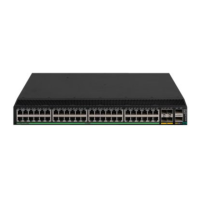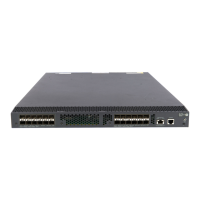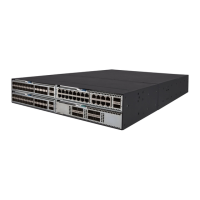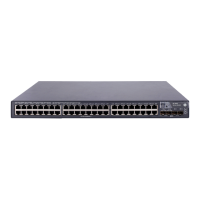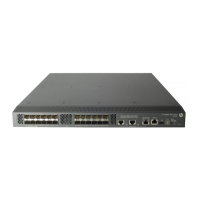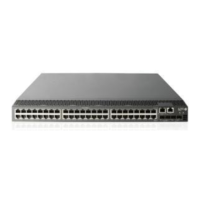56
Configuring traffic filtering
You can filter in or filter out traffic of a class by associating the class with a traffic filtering action. For
example, you can filter packets sourced from a specific IP address according to network status.
Configuration procedure
To configure traffic filtering:
Ste
Command
Remarks
1. Enter system view.
system-view N/A
2. Create a traffic class and
enter traffic class view.
traffic classifier classifier-name [ operator
{ and | or } ]
By default, no traffic class is
configured.
3. Configure match criteria.
if-match match-criteria
By default, no match criterion
is configured.
4. Return to system view.
quit N/A
5. Create a traffic behavior
and enter traffic behavior
view.
traffic behavior behavior-name
By default, no traffic behavior
is configured.
6. Configure the traffic
filtering action.
filter { deny | permit }
By default, no traffic filtering
action is configured.
If a traffic behavior has the
filter deny action, all the other
actions except for class-based
accounting in the traffic
behavior do not take effect.
7. Return to system view.
quit N/A
8. Create a QoS policy and
enter QoS policy view.
qos policy policy-name
By default, no QoS policy is
configured.
9. Associate the traffic class
with the traffic behavior in
the QoS policy.
classifier classifier-name behavior
behavior-name
By default, a traffic class is not
associated with a traffic
behavior.
10. Return to system view.
quit N/A
11. Apply the QoS policy.
• Applying the QoS policy to an
interface
• Applying the QoS policy to a VLAN
• Applying the QoS policy globally
Choose one of the application
destinations as needed.
By default, no QoS policy is
applied.
12. (Optional.) Display the
traffic filtering
configuration.
display traffic behavior user-defined
[ behavior-name ]
Available in any view.

